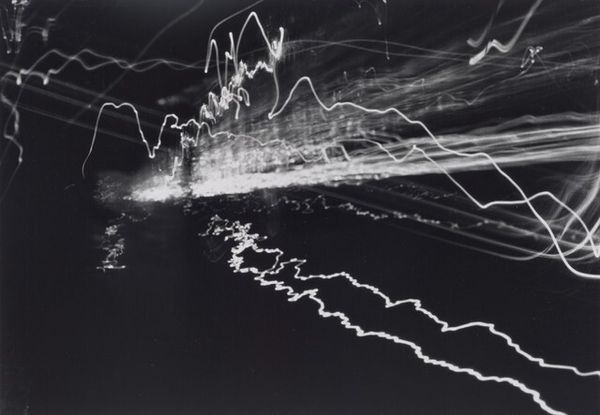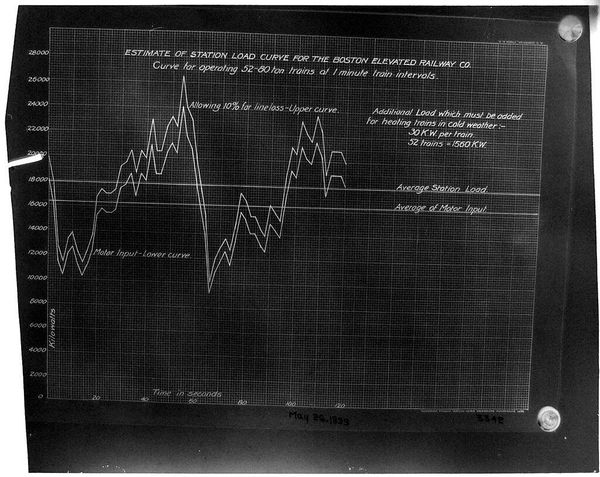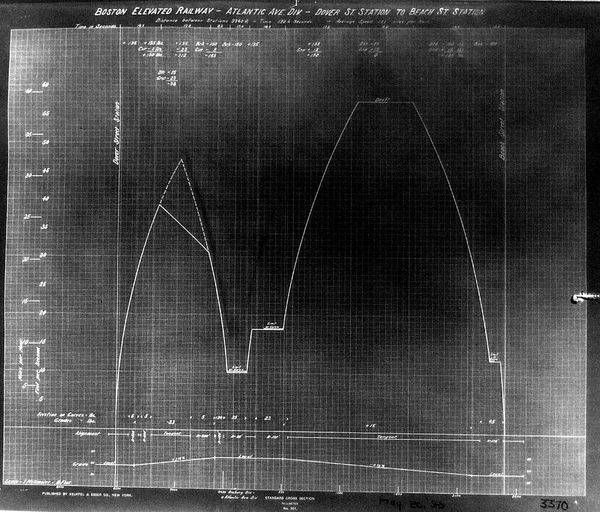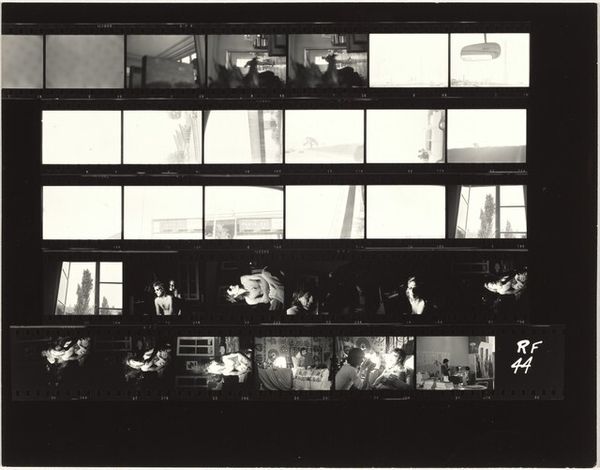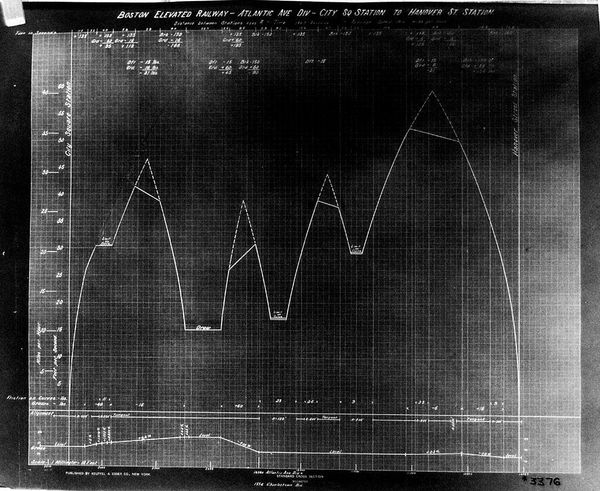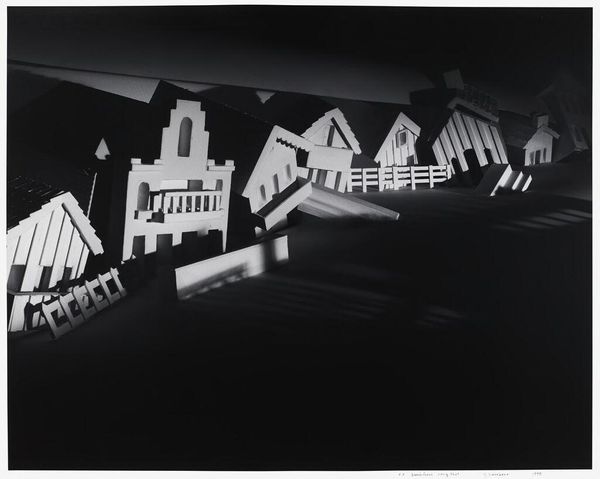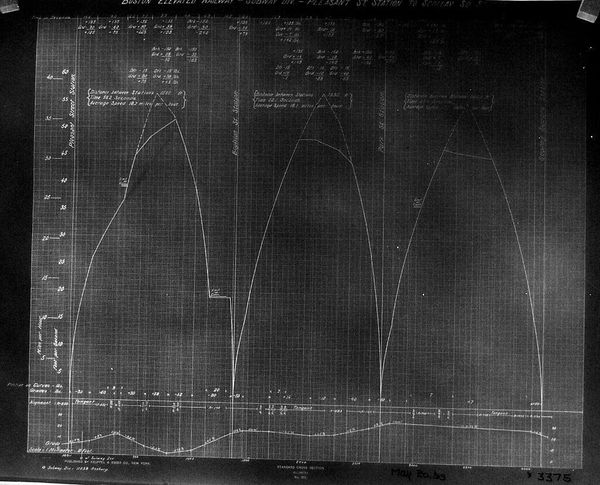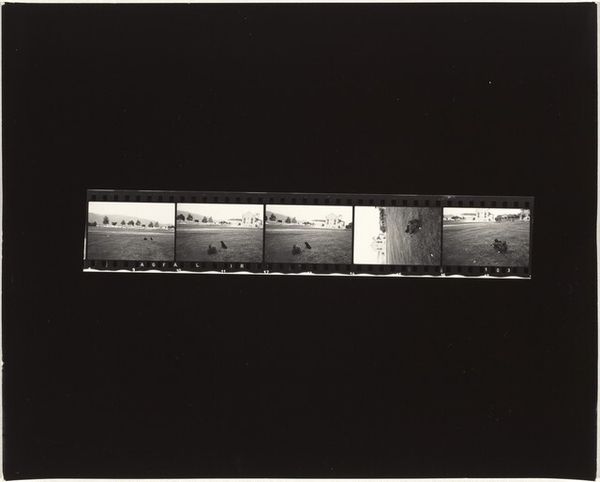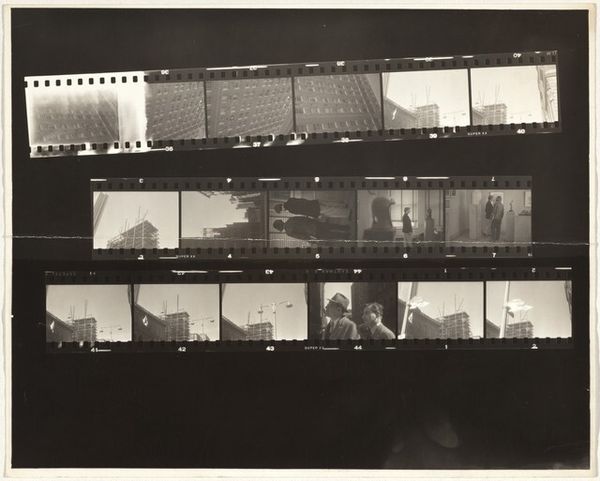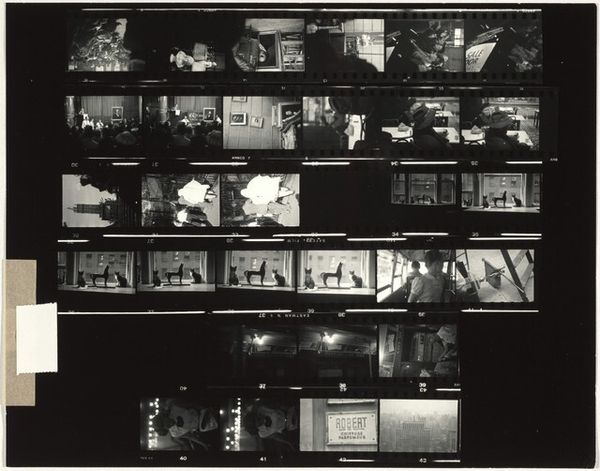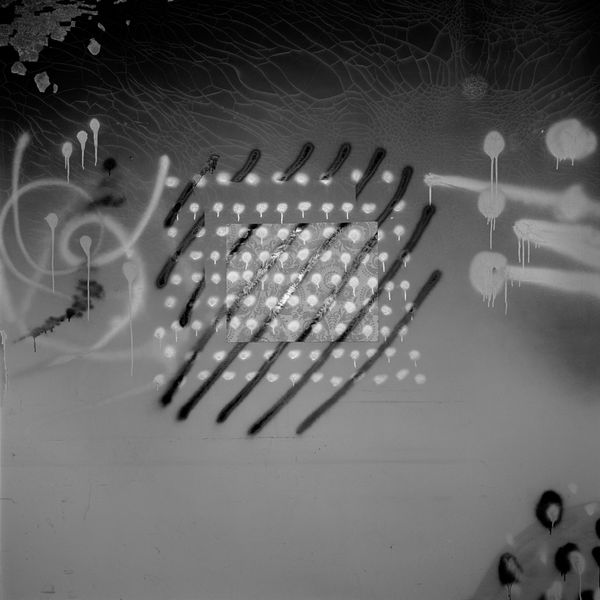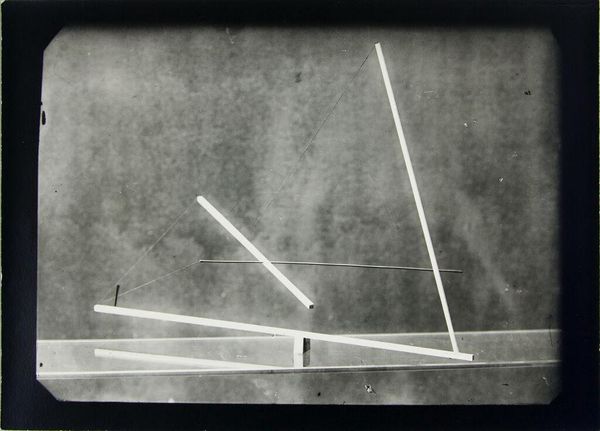
photography, installation-art
light-and-space
kinetic-art
photography
geometric
monochrome photography
installation-art
abstraction
line
monochrome
digital-art
monochrome
Curator: This photograph captures György Kepes's "Kinetic outdoor light mural for the Radio Shack in Boston" from 1950. What strikes you most immediately? Editor: The contrast! Stark white lines against a textured dark background. It’s both visually arresting and kind of… industrial, I guess. Makes me think about the role of light and communication. Curator: Communication is key. Kepes was deeply interested in the relationship between art, science, and technology. The mural, an early example of kinetic art, speaks to postwar optimism surrounding technological advancement. Editor: Absolutely. I see the piece itself, with its pulsating lines and what appear to be electronic diagrams, pointing towards modes of production, of electricity and the post-war enthusiasm towards technology and social progress. But, Radio Shack? A commercial enterprise co-opting avant-garde ideas. Curator: Indeed, situating the piece within the context of post-war America, it becomes fascinating to analyze the interplay between consumer culture and artistic expression. It embodies both promise and potential capitalist appropriation, perhaps revealing underlying societal tensions and gendered labor practices in an era marked by profound societal shifts. Editor: Right. Beyond the social implications, the materials matter too. The translation of a potentially huge-scale light mural into a photograph flattens the dynamic kinetic experience and makes us consider its existence now through documentation of the process, the record of it, maybe making this photograph as, if not more, valuable than the initial outdoor mural? Curator: It also reminds us how images and symbols can become entangled with capitalist ideology, especially during an era defined by unprecedented media proliferation. Editor: I see how this examination highlights the often unseen labor and power structures behind cultural production. A good reminder that the impact of artwork relies heavily on how it gets displayed, recorded, and, ultimately, experienced and used. Curator: A most valuable point indeed. The intersectional dialogue, the historical and social context…It reveals something about the promise and appropriation inherent to technology, culture and capital. Editor: Exactly. And I think its legacy remains impactful in today’s media and digital landscape, in ways perhaps more apparent to later audiences than people in 1950s Boston.
Comments
No comments
Be the first to comment and join the conversation on the ultimate creative platform.
